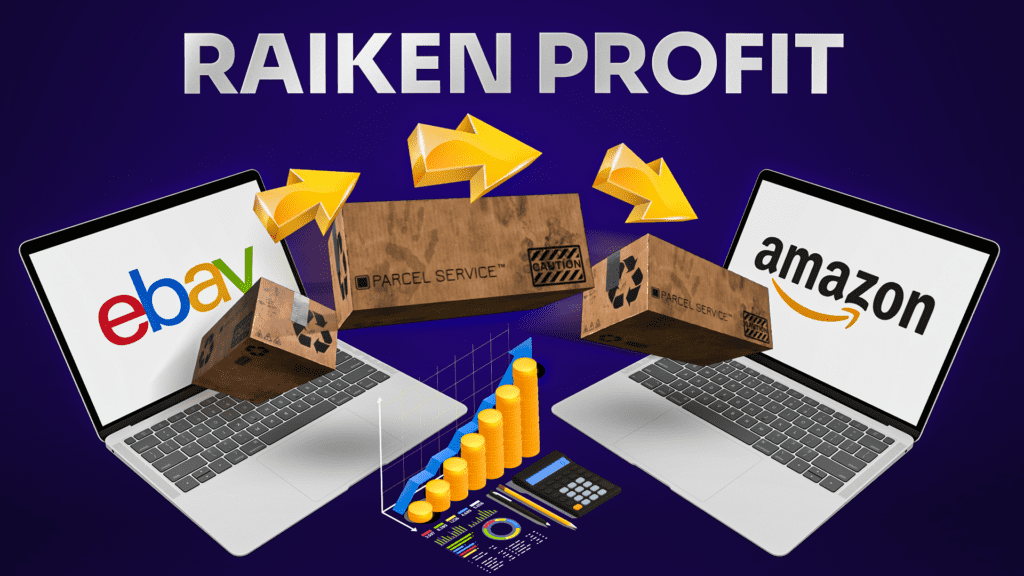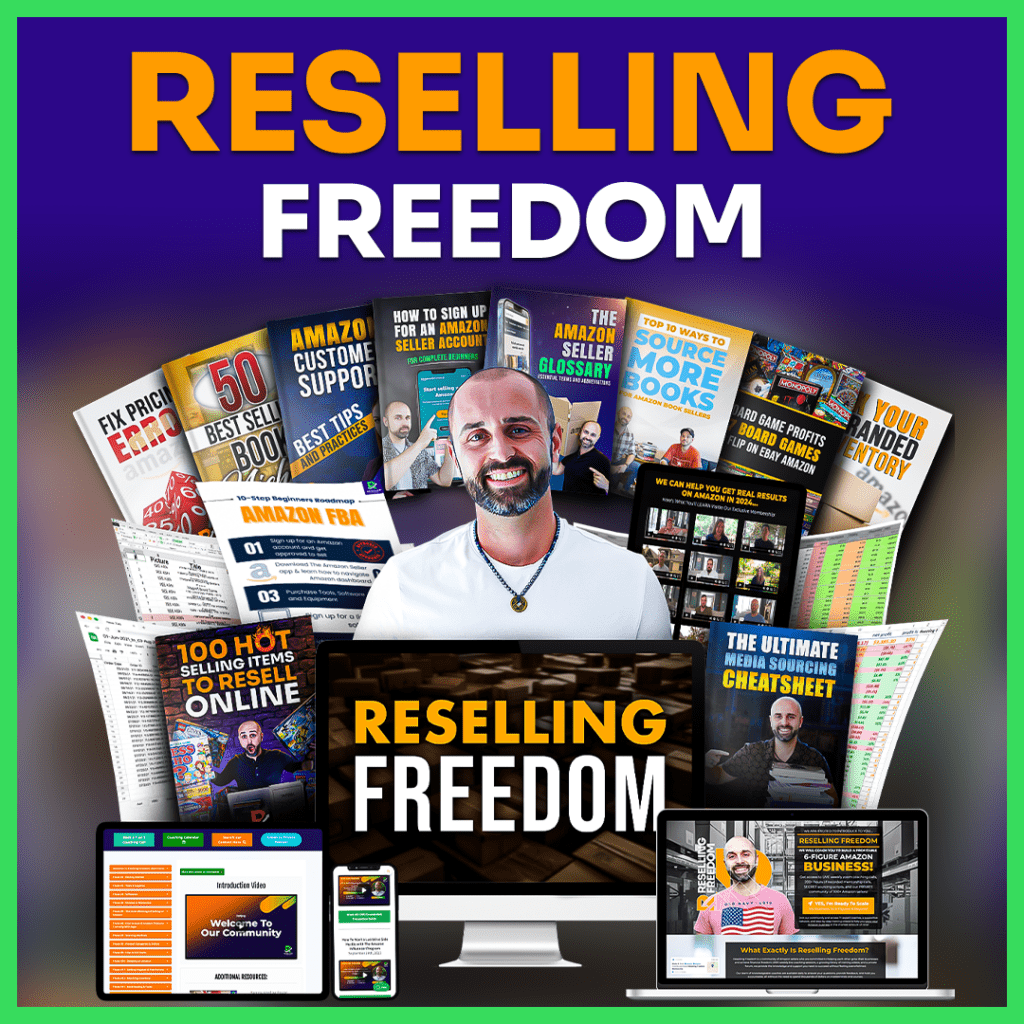
I'm Steve, the owner of Raiken Profit, and today, I have the privilege of sitting down with my good friend, Ben.
We're at Ben's residence, the epicenter of our eBay to Amazon Arbitrage (E2A) Mastermind gathering.
This gathering focuses not just on traditional strategies but also delves into techniques for successful eBay to Amazon flipping.
A room full of brilliant minds, we've got around 25 eBay and Amazon sellers, including some Online Arbitrage experts like Jamison Philippi and Romer the Romer.
We're grateful to Ben's wife for allowing us to enjoy pool time and pizza.
Are you ready to discover how Ben skyrocketed his monthly e-commerce revenue to hit the jaw-dropping $50,000 mark?
Stick around as we dive into an insightful conversation about the power of community, the value of sharing knowledge, and some sneak peeks into our latest collaborative project.
Whether you're just starting out or looking to optimize your existing operations, we'll offer valuable insights on how to sell on Amazon successfully.
Ben earns $40K-$50K per month with this eBay to Amazon Model

Meet Ben, an e-commerce maven who has turned the eBay to Amazon model into a lucrative business, generating monthly revenues between $40,000 and $50,000.
Ben has evolved his strategies over the years from Amazon-centric dropshipping to a more diversified approach that includes eBay to Amazon arbitrage.
His journey reveals impressive figures and a keen eye for identifying and seizing new business opportunities.
Watch the Video below:
(Click here to watch on YouTube)
Without further delay, let's dive into our in-depth interview.
Here, Ben shares invaluable insights into transforming the eBay to Amazon (E2A) business model into a robust revenue stream, averaging between $40,000 and $50,000 per month.
You'll definitely want to take notes for this enlightening exchange.
How long have you been selling products on Amazon?
I started dabbling in Amazon sales about 10 years ago.
After initially setting up an account, I took a hiatus and then switched to a different business model about six years ago.
Can you tell us about your journey to eBay to Amazon (E2A)?
Absolutely. I started with dropshipping and initially focused on Amazon.
I then transitioned to the eBay to Amazon flipping (E2A) model about four years ago.
Currently, I'm pulling in between $40,000 to $50,000 a month on average, although there have been months where I've exceeded that.
The funny thing is, transitioning from eBay to Amazon (E2A) felt like a natural evolution; it was almost like flipping my existing Amazon to eBay dropshipping model.
I started this journey in 2012, which feels like a lifetime ago.
You mentioned transitioning from Amazon to eBay dropshipping to doing it the other way around. What challenges and opportunities did you encounter when you made that shift?
You're right. My journey began with Amazon to eBay dropshipping.
That model was quite successful until both eBay and Amazon started implementing stricter rules, making it more difficult to continue.
During that phase, though, I learned crucial aspects like managing inventory and matching items.
About five years ago, I started pondering the idea of eBay to Amazon flipping—sourcing items from eBay to sell on Amazon.
Initially, it was challenging because items on eBay are scattered across various sellers, making the eBay to Amazon arbitrage sourcing process complex.
But as I got the hang of it, I was amazed by the profit margins I was achieving.
Like most people, I started with retail or online arbitrage, but once I dived into this new model, it was a game-changer in terms of profitability.
You've mentioned that shifting from dropshipping to eBay to Amazon flipping opened up higher profit margins for you. Can you elaborate on that? What kinds of margins are we talking about, and how did it compare to your previous dropshipping model?

Absolutely, transitioning to sourcing on eBay and selling on Amazon felt like striking gold.
In my previous dropshipping model, profits could be hit or miss—sometimes decent, but often slim.
Once I shifted the focus, the profit margins were astonishingly higher.
We're not talking about just $4 or $5 per item; it was more like $50 to $60 and even surpassed $100 on some occasions.
I continued my dropshipping activities alongside this, but the new E2A flipping model became a significant income stream because of those lucrative margins.
It sounds like your business model again evolved to include Fulfillment by Amazon (FBA). How did that transition come about?
Yes, it was almost a natural progression.
As I continued to source items with high-profit margins on eBay, I began to see the inefficiency in waiting to dropship them.
When I'd come across an item with, say, a $60 profit margin, it made more sense to buy it right then and there and send it into Amazon's FBA program.
This approach optimized the profit-making potential, so it was a logical next step in my business evolution.
Considering your extensive experience in the eBay to Amazon space, how would you describe the current state of the industry? What opportunities and risks should newcomers be aware of?
The eBay to Amazon market is surprisingly underrated, with a vast "blue ocean" of untapped opportunities.
While there are some risks involved, the potential rewards are significant.
Many are hesitant to dive into this space, perhaps due to those risks, but that leaves a lot of room for those willing to try it.
So for anyone wondering how to sell on Amazon, the market conditions seem favorable for newcomers willing to navigate the risks.
I've come across others in the industry who are achieving great success, selling items ranging from $300 to over $1,000.
So, if you're considering entering this field, I would advise weighing the risks and recognizing the enormous opportunity.
What advice would you offer someone considering the eBay to Amazon model but worried about getting banned?
When I first considered this business model, I had the same fears.
People warned me that selling products from eBay on Amazon could get my account terminated.
Initially, I was also concerned about the lack of traditional invoices, which are usually crucial for verifying authenticity on Amazon.
Even with these cautions in mind, I proceeded carefully as I took the plunge.
For instance, I inspected items personally before shipping through Fulfillment by Amazon (FBA) to ensure quality and authenticity before they reached the customer.
Surprisingly, I ran into very few issues, even with items that could potentially be counterfeit.
I also experimented with Online Arbitrage, purchasing items from established retailers like Walmart and Walgreens.
I thought this would be a 'safer' option since I had formal receipts.
However, I once received an inauthentic complaint for a Walmart-branded item despite having all the necessary receipts.
It made me realize that the perceived safety of traditional methods might not be as rock-solid as we think.
Why continue with the eBay to Amazon model if it offers higher risks?
The decision to continue with the eBay to Amazon model boils down to a cost-benefit analysis. Interestingly, I found that despite the higher risks (no invoices) I had fewer complaints and issues compared to other sourcing methods.
When a complaint did arise, it was usually easy to resolve by creating a detailed Plan of Action or acknowledging an error.
Moreover, as you scale up, Amazon's Account Health Assurance kicks in, which adds a layer of safety to your eBay to Amazon arbitrage business.
It ensures you won't face immediate account suspension without a prior conversation with Amazon's team.
At the end of the day, Amazon is invested in your success.
The better you do, the more they earn through fees, so it's a mutually beneficial relationship.
They might have an odd way of expressing it, but their objective is for sellers to thrive on their platform.
This realization further convinced me to stick with the eBay to Amazon model despite the lower profit margins.
Can you share some insights into the items that do well in the eBay to Amazon model?
Absolutely. A large proportion of the items that do well in eBay to Amazon flipping are those that are harder to find or have been discontinued.
These aren't necessarily high-frequency sales items; we're talking about products that sell maybe 20, 30, or 40 times a month.
For instance, older electronics for which certain parts are no longer readily available can be lucrative. The same goes for retired Lego sets.
This approach unlocks a treasure trove of opportunities that many people overlook.
The chance of encountering a counterfeit complaint for such unique items is considerably low, especially when you can verify their authenticity through things like original Walmart stickers or brand-new packaging.
So, this strategy can be a goldmine for those willing to explore these less obvious avenues.
Who is the eBay to Amazon flipping model suitable for, especially for newcomers with a limited budget? How should one approach it?
That's a pertinent question. For newcomers or those with a limited budget, gaining a foundational understanding of the industry is crucial.
Jumping directly into the eBay to Amazon model without any experience can be risky, especially regarding invoice requirements.
A prudent approach is to start small.
Head to Walmart or a local thrift store and pick up some used books or other simple items.
This lets you get a feel for the process and minimizes the chance of making a costly error.
Amazon monitors new accounts closely, especially during the first few months, to ensure you follow all the guidelines.
Also, Amazon sometimes conducts "velocity reviews" if your account grows too quickly.
They may ask you to provide invoices or receipts as proof of purchase.
They might even temporarily pause your account to review your documents.
So, I suggest focusing on understanding the basics in the first 90 days.
Purchase from stores where you can get proper receipts.
Once you're comfortable and have a decent grasp of the mechanics, you can then consider branching into the eBay to Amazon model.
There's a vast opportunity waiting for you, but it's crucial to get the basics right first.
What's the initial investment needed to start with the eBay to Amazon Arbitrage (E2A) model?
Many people have a misconception that starting with the E2A model requires a significant investment, but that's not the case.
The eBay marketplace is still a thriving platform, and its vast inventory provides plenty of opportunities for profit at different scales.
To answer your question directly, you can start with as little as $100 to $200.
You don't have to aim for massive profits right off the bat.
Starting small with $5 profit margins on items can be a sensible way to understand the ropes and scale up later.
This minimal initial investment makes the model accessible for people looking to start an online selling business without breaking the bank.
So if you've been pondering how to sell on Amazon without substantial upfront costs, the E2A model might be a feasible route.
Ben and I use a software known as Flipmine, which I highly recommend as a starting point.
The platform allows for customized filtering; for instance, you can search for items priced below $10 that sell for over $30.
Alternatively, you can follow the approach of our colleague Dan, who sets his filters only to show items that cost at least $100 but sell for $200 to $300.
This flexibility makes it an ideal tool for those working within various budget constraints.
Now, let's kick things into high gear. Ben, do you mind if we dive into a 'Speed Round' of quickfire questions and answers?
Not at all.
Let's go ahead with the 'Speed Round.’
New or used items for eBay to Amazon flipping?
Primarily new items, although both can work.
What's your favorite category to flip from eBay to Amazon Arbitrage?
Electronics and business and industrial items like tools and home improvement goods.
What minimum profit margin do you accept when flipping from eBay to Amazon?
$14.
What's the minimum number of monthly sales you look for when choosing a product to flip?
At least 10 monthly sales, but can go as low as 5 if the profit margins are high.
Do you focus on one-off items, or are you buying in bulk?
Both. Always looking for new items, but willing to buy multiple quantities if it's a known seller.
Do you use any tools for protecting against IP complaints?
Yes, IP Alert and AZ Alert are the primary tools used.
What's the minimum ROI you aim for?
40%, but can go as low as 30% if the situation warrants it.
What's the first word that comes to mind when you think of eBay to Amazon in Q4?
Treasure.
Do you have any big goals for the fourth quarter? Have you ever hit six figures in a month?
Yes, I have hit six figures, but it fluctuates. I am excited for the upcoming fourth quarter.
As we conclude our engaging talk with Ben, I can't help but reflect on the incredible power of community.
Ben jumped on board with our E2A masterclass right at its launch, and let me tell you, I've learned just as much from him as he has from me—if not more.
When we started, I was doing around $20,000 a month; now, my involvement with proactive and like-minded individuals like Ben has not only enriched his business acumen but also cultivated a spirit of collective growth.
This was clearly highlighted during a recent late-night brainstorming session among the group, where the collective revenue from just the eBay to Amazon model totaled an astounding $300,000 a month.
This is the beauty of surrounding yourself with proactive, like-minded individuals. It's not about competition; it's about collaborative growth.
We're even working on a new Replens software, and it's shaping up to be a game-changer.
Thanks to Ben, the brains behind the operations, for hosting us.
It's just another testament to the supportive nature of our community.
If you have questions or want to join the conversation, comment below.
If you're part of any related communities, we'd appreciate it if you could leave a comment and tag us.
Hopefully, you guys enjoyed this interview.
Take care, and stay tuned for more.









